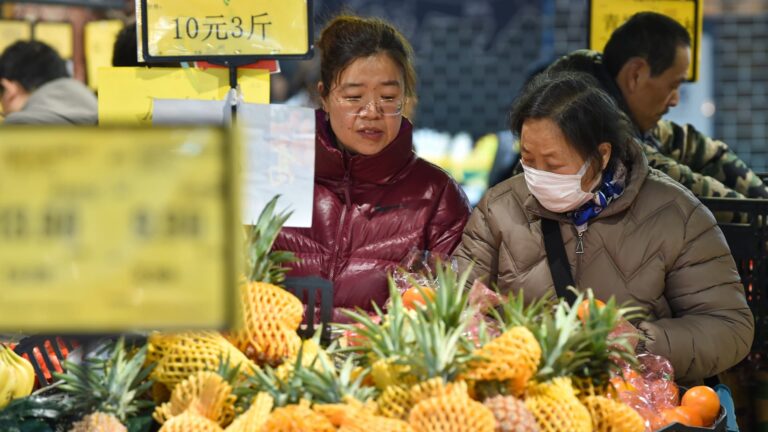Citizens are shopping at a supermarket in Nanjing, East China’s Jiangsu province, on March 9, 2024.
Costfoto | Nurphoto | Getty Images
China’s retail sales growth slowed in April, data from the National Bureau of Statistics showed Monday, signaling that consumption remains a worry for the world’s second-largest economy.
Retail sales rose 5.1% from a year earlier in April, missing analysts’ estimates of 5.5% growth, according to a Reuters poll. Sales had grown by 5.9% in the previous month.
Industrial output grew 6.1% year on year in April, stronger than analysts’ expectations for a 5.5% rise, while slowing down from the 7.7% jump in March, indicating the impact from U.S. tariffs was not as harsh as was being expected.
“We should be aware that there are still many unstable and uncertain factors in [the] external environment,” the statistics bureau said. “The foundation for sustained economic recovery needs to be further consolidated.”
Fixed-asset investment for the first four months this year, which includes property and infrastructure investment, rose 4.0%, slightly lower than analysts’ expectations for a 4.2% growth in a Reuters poll.
The urban unemployment rate in April eased to 5.1% from 5.2% in March, at a time when U.S.-China trade war had led economists to warn about substantial job losses in China.
U.S. President Donald Trump had placed tariffs of 145% on imports from China that came into effect in April, while Beijing had retaliated with 125% levies on American imports.
Answering questions on the impact of the ongoing trade conflict with the U.S., the statistics bureau spokesperson Fu Linghui stressed Beijing’s efforts aimed at diversifying exports to other regions, noting that the trade figures in April pointed to overall resilience.
China’s exports surged more than expected in April, as a jump in shipments to Southeast Asian countries helped it offset a sharp drop in outbound goods to the U.S.
In April, the U.S.-bound shipments plunged over 21% from a year earlier. In the first four months this year, China’s exports to the U.S. dropped 2.5%, according to customs data.
Fu added that the recent reduction in the mutual tariffs would benefit trade for both sides, while cautioning that domestic demand, including consumption, still lacked momentum.
Automobile sales grew just 0.7% last month from a year earlier, compared to 5.5% jump in March, despite an expanded program that subsidizes consumers and businesses to trade in vehicles and other select products, including smartphones and home appliances.
Within fixed asset investment, the drag from real estate worsened, falling 10.3% for the year as of April.
The real estate sector remained in a period of “adjustment” and pressure on the sector was still large in certain regions, said Fu.
China’s CSI 300 index fell 0.39% while the Chinese offshore yuan was little changed at 7.2133 against the greenback.
Cautious growth upgrades
Trade-war fears have receded after a meeting of U.S. and Chinese trade…
Read More: China’s retail sales disappoint as stimulus fails to spur demand;



